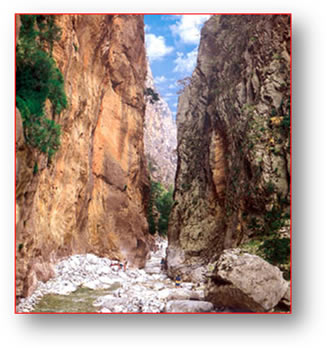
Hotels, Villas and rent rooms in the historical town of Chania!
Chania
Ancient times
The ancient city “Kydonia” was established at the same location with Chania. However, N. Plato placed at the same location the prehistoric city of Alchania, which is probably the reason for the name of the modern city.

Venetian – Turkish domination:
The city for many centuries was considered a settlement of no significant importance. However, this settlement was boosted after the 4th Crusade (1204) and specifically in 1952 from the Venetian settlers, who settled in Kastelli and fortified it. During the Venetian-Genoates war, the Genoates attempted to conquest the city (1296) by bombing it. The first fortification of Chania was completed in steps and the major one, started in 1536,  with design from Venetian architects. Two years later Harientin Barbarossa laid siege to Chania without success, thanks to the powerful Venetian artillery and the heroism of the locals.
with design from Venetian architects. Two years later Harientin Barbarossa laid siege to Chania without success, thanks to the powerful Venetian artillery and the heroism of the locals.
The Turkish, after ransacking the area of Kissamos, they turned against Rethimno and finally gave up. During this period, Chania and Chandakas (Heraklion) was the major cities of Crete and were exporting goods to Venice, Constantinople, Corfu and Nice.
In the meantime, the propagation of the Turkish occupation in the south Aegean Sea and Cyprus forced Venice to boost its fortifying projects on the island and in 1602 the Venetian Moro reinforced even more the city of Chania. In 1630 the city acquired 89 cannons of various types, which finally proved to be weak to avert the conquest of the city from the Turks in the first year of the Venetian-Turkish war (1845-1669).  The first Turkish landing force disembarked in June 1645 near the Gonia Monastery, west form Chania, and in a few hours they disembarked at the city of Chania. After several months of siege and despite the brave resistance of the Venetians and Greeks, the city surrendered in 22nd August 1645. After the occupation of the island from the Turks, the island was divided, similarly to the Venetian occupation, to four counties: i) Chandaka (Heraklion), ii) Chania, iii) Rethimno and iv) Sitia. The endeavor form the Venetians to take back the island during the Venetian-Genoates war (1684-1698) did not have successful result. In July of 1692 the Venetian admiral Domenico Motseningo laid siege to Chania with the support of the Greeks from Apokoronas and Sfakia, but the siege was terminated in the 8th of August and Motseningo abandoned the fight in 7th of September.
The first Turkish landing force disembarked in June 1645 near the Gonia Monastery, west form Chania, and in a few hours they disembarked at the city of Chania. After several months of siege and despite the brave resistance of the Venetians and Greeks, the city surrendered in 22nd August 1645. After the occupation of the island from the Turks, the island was divided, similarly to the Venetian occupation, to four counties: i) Chandaka (Heraklion), ii) Chania, iii) Rethimno and iv) Sitia. The endeavor form the Venetians to take back the island during the Venetian-Genoates war (1684-1698) did not have successful result. In July of 1692 the Venetian admiral Domenico Motseningo laid siege to Chania with the support of the Greeks from Apokoronas and Sfakia, but the siege was terminated in the 8th of August and Motseningo abandoned the fight in 7th of September.
During the Greek revolution, Chania were one of the most significant administrative and military centers of Crete and the base of operations for the Turks against the rebels. Straight after the war declaration, the Greek population of the city suffered oppressive rules and persecutions and in 11 of June 1821 it was decimated from the terrible massacre. After a few years, the slaughter continued  in Akrotiri and the Monasteries of St. Triada and Gouvernetou were ransacked. During the large Cretan Revolution (1866-1869), despite the presence of powerful military units in Chania, the city was the coordinating centre and the base of the revolution committee. The rebellion of 1878 of two thousand rebels set under their control the countryside and attacked to the fortress of Itzedin.
in Akrotiri and the Monasteries of St. Triada and Gouvernetou were ransacked. During the large Cretan Revolution (1866-1869), despite the presence of powerful military units in Chania, the city was the coordinating centre and the base of the revolution committee. The rebellion of 1878 of two thousand rebels set under their control the countryside and attacked to the fortress of Itzedin.
It should be noted that at these times, according to the signing in 1881, Chania had only 3500 Christians, whereas the Muslims were close to 9500. After the unification of Crete with the rest of Greece the population, financial and cultural evolution of Chania was rapid. The population grew from 20.000 in 1900 to 26.000 in 1928 and 29.000 in 1940.
The Germans conquered the city in 27 March 1941, after a tough fighting and the population suffered once more from occupation forces.
Maps
Lodgings map
Accommodation in Crete:
- Chania
- Rethymno
- Heraklion
- Lasithi





